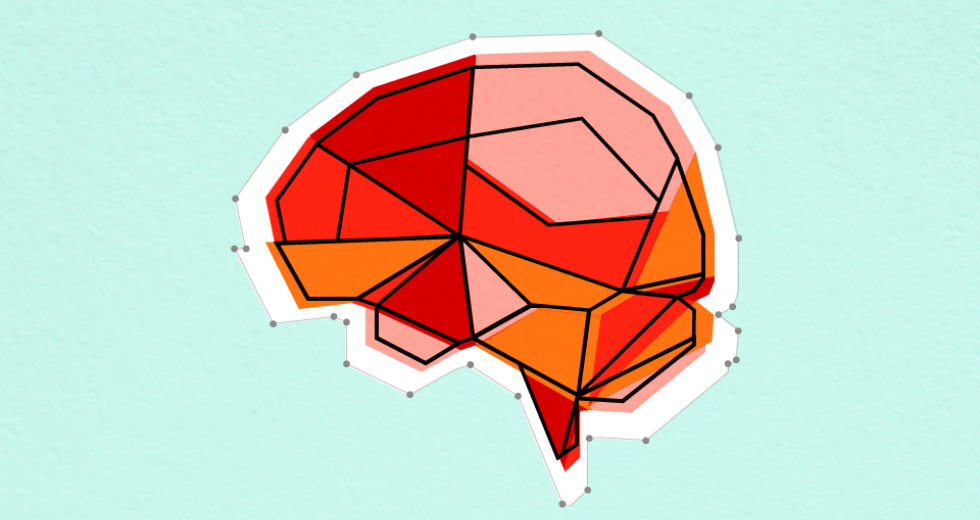Thirty years from now, we all might be getting some sort of neurofeedback. Scientists are now using this cutting-edge method — a way of scanning the brain and giving it course corrections — to treat a battery of conditions that range from ADHD to depression and seizures.
In short, here’s how it works: An electroencephalogram (EEG), sits on your skull and scans your brain. Then, in real-time, it tracks your brain’s activities as you play a computer game or perform some other activity — searching for patterns associated with particular behavioral traits. When your brain exhibits the “correct” behavior, you get positive feedback, and vice verse. Your brain then adapts, even if you aren’t quite sure how. (More on this in our February cover story.)
This is hardly mainstream treatment, and the science is still young, but it’s no longer just some hair-brained speculation. Real trials have shown real results.
Welcome to the future.
ADHD
Multiple studies have shown that for people with attention deficit disorder, neurofeedback can help instill calm and focus — especially in children. In a study of 104 children in the Journal of Pediatrics, those who underwent the training had “more prompt and greater improvements in ADHD symptoms” than the control. Bonus? The benefits were sustained 6 months later, something you don’t get with conventional medication. The hope is that, unlike pills that have to be popped forever, neurofeedback can make a permanent change to the brain. And if it works for patients with clinical ADHD, theoretically, maybe it could work for all of us who feel the pangs of mild anxiety.
Migraines
Maybe EEGs are the new Aspirin? Migraines are a sneaky national epidemic. As a 2011 study from Dr. Jonathan Walker notes, migraines occur in 28 million Americans — 18 percent of all women and 6 percent of all men. The usual treatments often don’t cut it, as “only 29 percent of migraine sufferers are very satisfied with their usual acute treatment.” So for this experiment, the researchers gave each migraine sufferer five 30-minute segments of neurofeedback training, and then compared to a control group. The results? The researchers happily conclude that, “Neurofeedback appears to be dramatically effective in abolishing or significantly reducing headache frequency in patients with recurring migraine.”
Related: The Dean Can Read Your Mind
Epilepsy
The conventional treatment sometimes for epilepsy isn’t up to snuff. In a full one-third of all cases, it simply doesn’t work. Could neurofeedback do better? A 2009 meta-analysis combed through all of the neurofeedback trials on epilepsy, finding that not only does it work, it works especially well for patients where conventional treatment does not seem to work. “We analyzed every EEG biofeedback study … between 1970 and 2005 on epilepsy that provided seizure frequency change in response to feedback,” write the researches in their conclusion. “Sixty-three studies have been published, 10 of which provided enough outcome information to be included in a meta-analysis … Based on this meta-analysis, EEG operant conditioning was found to produce a significant reduction in seizure frequency. This finding is especially noteworthy given the patient group, individuals who had been unable to control their seizures with medical treatment.”
Depression
As many as 17 percent of all Americans will suffer through depression. What if neurofeedback could be a game-changer, treating depression without the need for drugs like Prozac? Multiple studies are demonstrating — but not yet conclusively proving — that neurofeedback can work. As Andrea Petersen notes in the Wall Street Journal, in one recent study, after neurofeedback training “the happiness scores jumped 20 percent; the control group went up just 2 percent. Depression scores and an anxiety measure also dropped after treatment.” It’s possible that the test was too small to have ironclad evidence, but again — promising .
Golf
If we can adapt the brain to give us better judgment, focus or leadership, why not change it to give us something truly useful and life-changing — like, say, a better putting form? Sacramento State’s dean of the College of Business, Pierre Balthazard, tells me that some peak athletes are already doing just that. But so far, the evidence isn’t exactly bulletproof. One 2014 study did find that neurofeedback could help an Olympic athlete regain his confidence after an injury. Then again, a 2015 experiment tested this with golf to mixed results. In this carefully controlled study, the researchers gave some recreational golfers three hours of neurofeedback training, and then another group “fake” neurofeedback training as a control. The results? “Despite causing this more ‘expert-like’ pattern of cortical activity, neurofeedback training failed to selectively enhance performance.” No one said it’s perfect…
Key takeaway: While this isn’t yet a garden variety treatment that your average primary care physician will instantly recommend, it’s no longer a renegade theory without any proof. The evidence is growing.




Comments
Awesome
We provide neurofeedback every day to people all over Sacramento at Neurofeedback Solutions, which is an arm of The Attach Place Center for Strengthening Relationships. The FDA has approved neurofeedback for the treatment of ADHD, which means it is only a matter of time for the "official" channels to recognize the incredible usefulness of being able to impact brain waves safely and permanently without the use of medication. It can be used to improve sleep, decrease anxiety, depression, physical pain and the impact of trauma. Imagine that, all without having to talk to a therapist or struggle to disclose painful feelings or issues you would rather not. www.neurofeedbacksolutions.biz for a Sacramento contact.